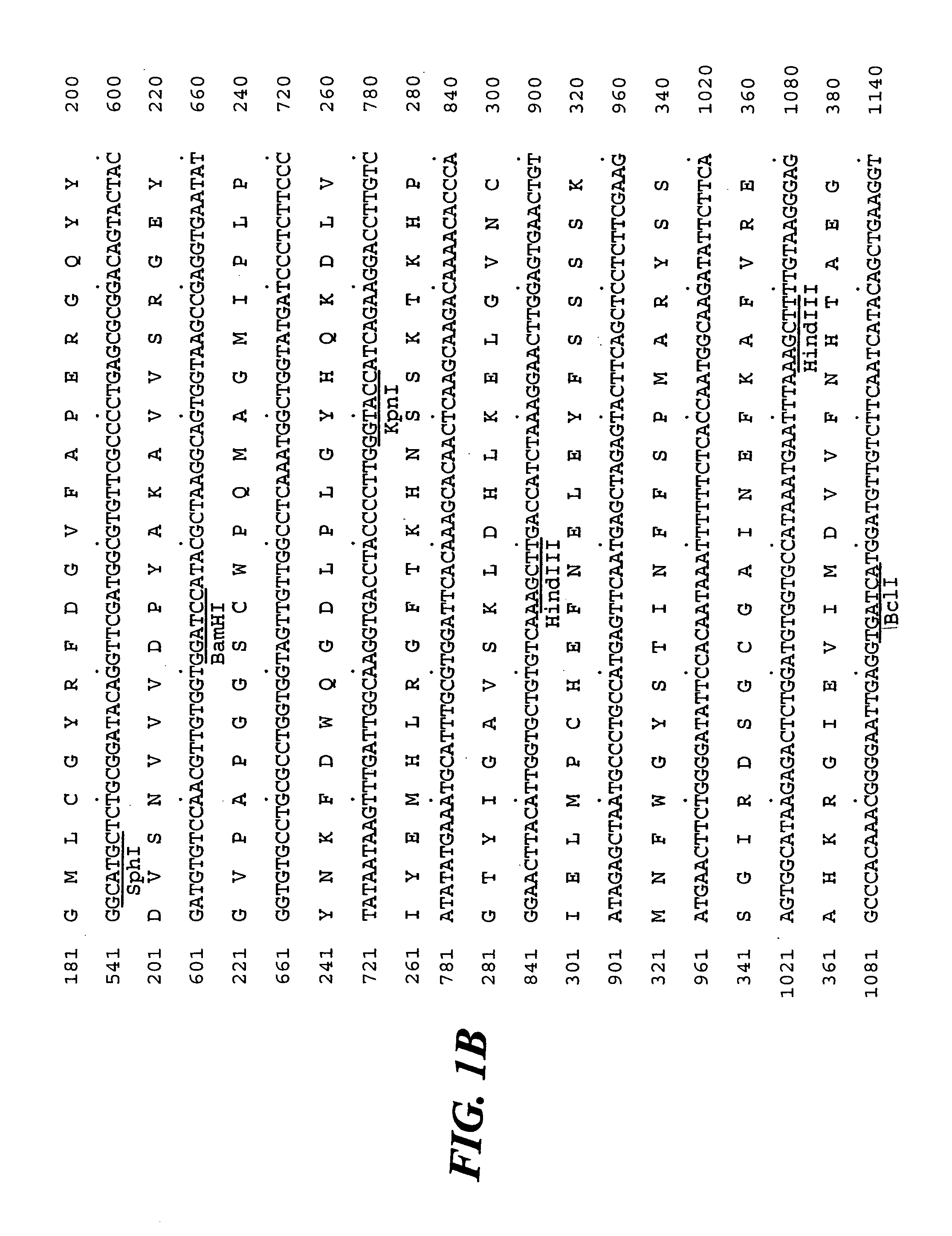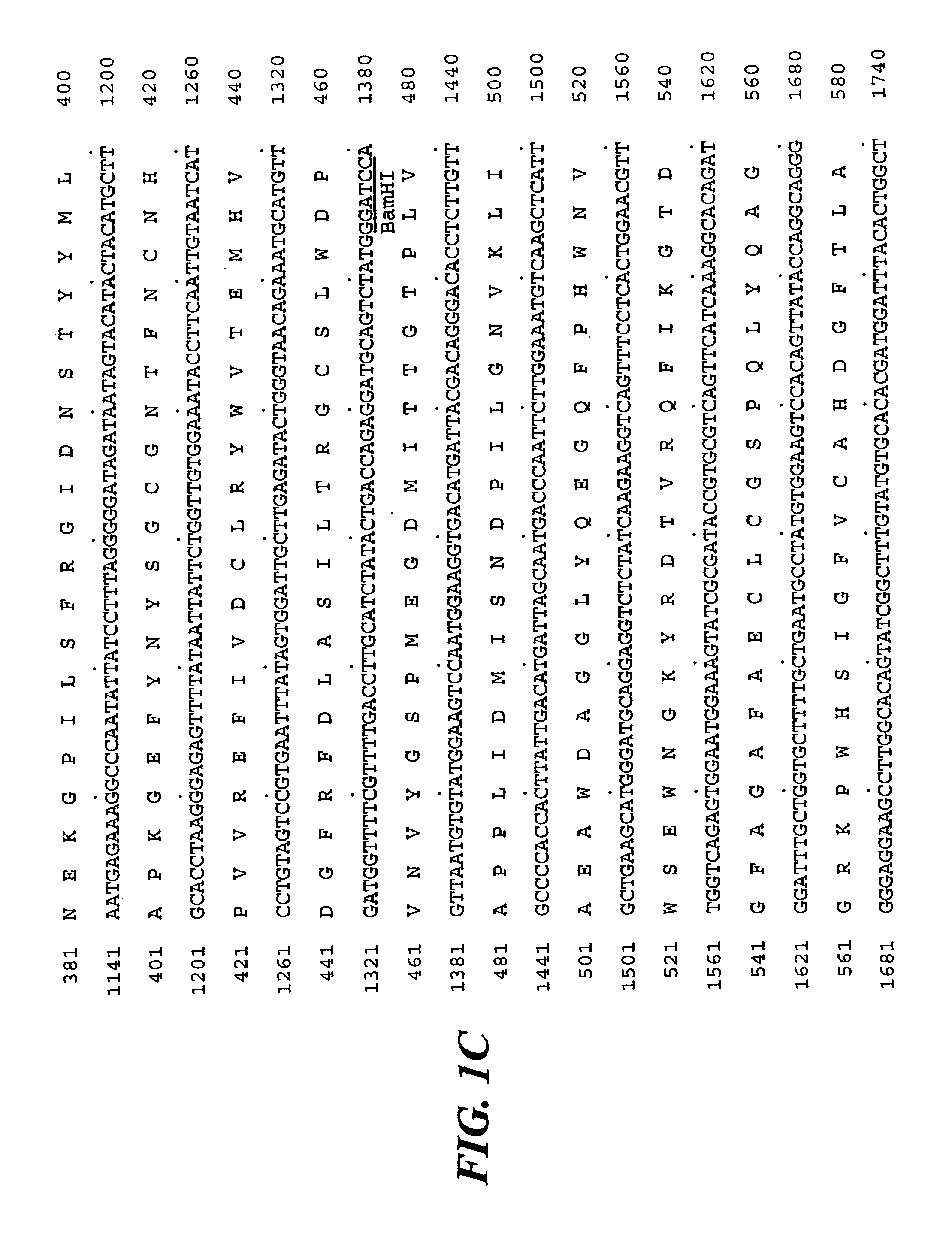Isolation of SU1, a starch debranching enzyme, the product of the maize gene sugary1
- Summary
- Abstract
- Description
- Claims
- Application Information
AI Technical Summary
Benefits of technology
Problems solved by technology
Method used
Image
Examples
example i
Isolation and Characterization of SU1 cDNA Clones
[0066] The Su1 gene locus can be isolated by transposon tagging methodology. Transposon tagging strategy is based on the assumption that insertion of a transposable element in a target gene will cause a mutation that can be identified by a specific phenotype. Two lines of evidence indicated that the cloned transposon-containing genomic DNA is within the SU1 locus. First, plants containing any of four independent SU1 mutations (SU1-R4582::Mu1, SU1-R2412, SU1-R7110, and SU1-R3162) displayed restriction fragment length polymorphisms (RFLP) in the same genomic interval, and these polymorphisms cosegregated with the sugary phenotype. The probability is very low that each of these rare genomic rearrangements would occur coincident with a SU1 mutation but not be causally related to SU1 function. Second, insertion of Mu1 within the cloned region occurred de novo within the same narrow developmental window in which SU1-R4582::Mu1 arose.
[0067...
example ii
SU1 Transcription and Analysis of an SU1 cDNA Clone
[0081] To characterize the product of the Su1 gene locus, SU1, a cDNA clone of the SU1 mRNA is obtained. The genomic fragment BE1000 is used as a probe in RNA gel blot analysis and detected a transcript of approximately 2.8 kb in total RNA isolated from wild-type kernels harvested 20 days after pollination. This transcript is more abundant in the polyadenylated RNA fraction than in total RNA, suggesting BE1000 detected the SU1 mRNA. A cDNA library constructed from maize endosperm mRNA in a bacteriophage λ vector is screened for hybridization with probe BE1000. In one embodiment, eight hybridizing clones are identified among approximately 200,000 recombinant phage examined. The longest cDNA insert in any of these clones is approximately 2.4-kb. After single plaque purification, the longest cDNA insert is excised from the recombinant bacteriophage and subcloned in phagemid vectors. An additional 280 bp at the 5′ end of the cDNA are c...
example iii
Preparation of Fusion Proteins
[0084] The glutathione S-transferase (GST) gene fusion system (Pharmacia Biotech) can be used for the expression and purification of portions of the protein (SU1) coded for by the maize gene sugary1 (SU1). The pGEX plasmids designed for this system enable inducible, high-level intracellular expression of genes or gene fragments as fusions with Schistosoma japonicum GST. These vectors carry a multiple cloning region to facilitate fusion of a gene fragment to the C-terminus of GST, a tac promoter inducible by the gratuitous lactose analog IPTG, and an internal lac Iq gene for use in any E. coli host. Because GST binds reversibly and with high affinity to glutathione, purification of a fusion protein can be accomplished by incubation with a glutathione-affinity matrix such as glutathione-agarose.
[0085] Two fragments of the SU1 cDNA are used to create fusion proteins. The first construct, termed pAR1, comprises an internal 1.8 kb region of the SU1 cDNA th...
PUM
| Property | Measurement | Unit |
|---|---|---|
| Mass | aaaaa | aaaaa |
| Mass | aaaaa | aaaaa |
| Mass | aaaaa | aaaaa |
Abstract
Description
Claims
Application Information
 Login to View More
Login to View More - R&D
- Intellectual Property
- Life Sciences
- Materials
- Tech Scout
- Unparalleled Data Quality
- Higher Quality Content
- 60% Fewer Hallucinations
Browse by: Latest US Patents, China's latest patents, Technical Efficacy Thesaurus, Application Domain, Technology Topic, Popular Technical Reports.
© 2025 PatSnap. All rights reserved.Legal|Privacy policy|Modern Slavery Act Transparency Statement|Sitemap|About US| Contact US: help@patsnap.com



